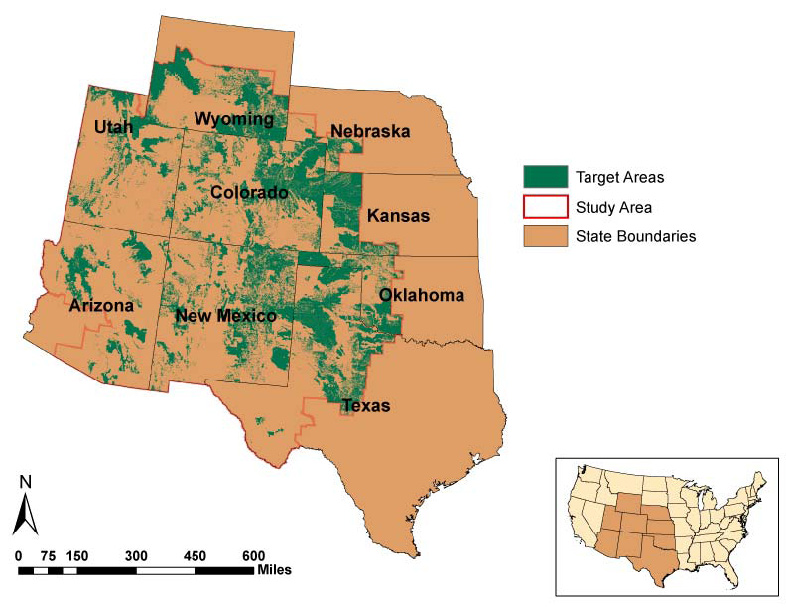Phase I – Characterization
Characterization Phase (2003-2005): The Southwest Partnership on Carbon Sequestration completed its Phase I program in December 2005. The main objective of the Southwest Partnership Phase I project was to evaluate and demonstrate the means for achieving an 18% reduction in carbon intensity by 2012. During Phase I, SWP characterized the region’s geologic and terrestrial sequestration attributes and options, including ranges of storage capacities of each option. The Partnership also evaluated and summarized CO2 sources in the region, and associated separation and capture technologies employed in the region. More information can be found in the expanded Project Description page, the Phase I Executive Summary, Fact Sheet (PDF, 480 KB) or the Final Report (PDF, 19.2 MB) or Report Appendices.
Results of the Southwest Partnership’s Phase I evaluation suggested that the most convenient and practical “first opportunities” for sequestration would lie along existing CO2 pipelines in the region. Action plans for six Phase II validation tests in the region were developed, with a portfolio that included four geologic pilot tests distributed among Utah, New Mexico, and Texas. The Partnership also planned to conduct a regional terrestrial sequestration pilot program focusing on improved terrestrial MMV methods and reporting approaches specific for the Southwest region. The sixth and final validation test consisted of a local-scale terrestrial pilot involving restoration of riparian lands for sequestration purposes, using desalinated waters produced from one of the geologic pilot tests.

